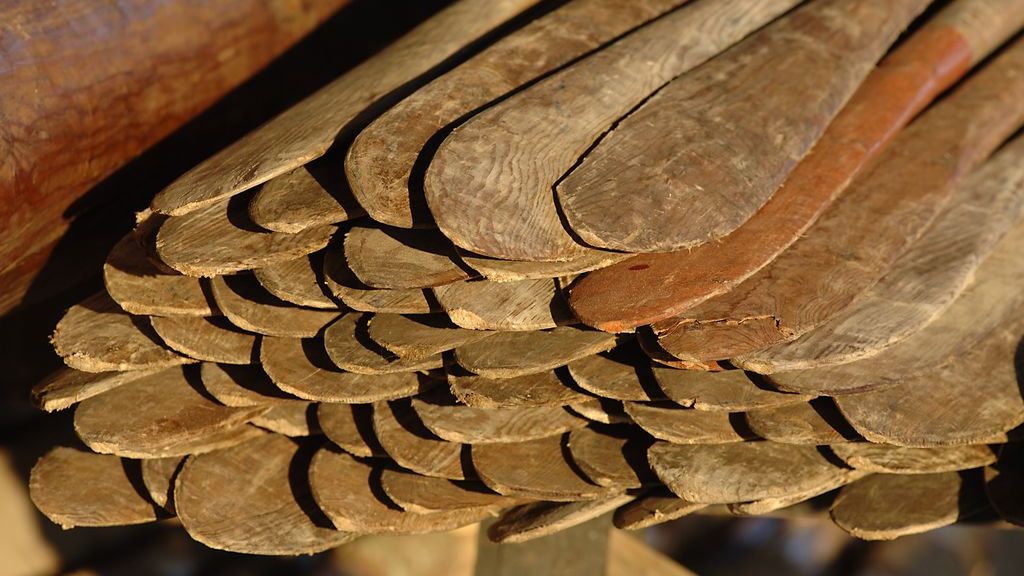The homepage of the Sea Stallion, www.seastallion.dk, has already gathered a lot of praise from all over, but good is not good enough, when one of marine archaeology’s greatest experiments ever takes off, and the world’s largest reconstruction of a Viking ship heads out to sea with a course set for Dublin.
“Last summer we tested the prospect of communicating to the surrounding world via the Sea Stallion homepage. And we immediately received very positive responses, even though our equipment was primitive to say the least. The amount of daily visitors rose from next to nothing to 5,000 in the course of the four weeks we sailed the Kattegat, Skagerrak and the North Sea. Now we go full-blown: If last year’s homepage was a horse cart, this year we will have a formula 1 race car,” leader of the project Preben Rather Sørensen declares.
From two phones to high-tech
During the test cruise in 2006 the Viking Ship Museum tried out the idea of electronically communicating the Sea Stallion’s endeavour as it happened. This was done with very simple technology: Every day skipper Carsten Hvid called the museum providing current data on the ship’s position and bearings, which were subsequently plotted onto a map on the homepage. Additionally a crewmember writing a diary sent it back to the museum in an e-mail from his mobile phone.
“The diaries actually worked okay, but only as long as we were close to shore and within range of the phone company networks. On the open sea we were cut off from writing anything for the homepage. Obviously we had to come up with another solution for this year, crossing the North Sea and sailing along very desolate shores north and west of Scotland,” Preben Rather Sørensen explains.
“At the same time the ambitions have grown immensely since last summer. The project surrounding the Sea Stallion has the objective of communicating the ship, the voyage, and the research taking place while travelling, as it happens. And to an international audience. The 5,000 daily visitors we had on the Sea Stallion homepage last year are definitely put into perspective by the fact that the BBC will be following closely this year, and they contemplate putting the Sea Stallion on the BBC homepage – which has something like 60,000 visitors – a minute!”
BGAN… mini-C… HDV
So this year the Sea Stallion has been equipped with a BGAN satellite emitter, a mini-C transceiver, and 6 HDV-camcorders and video editing gear.
“Maybe only a few people are familiar with this stuff, but what is important is not the technology anyway – the fantastic part is that we can communicate with the entire world – all the time. And all the world can look the researchers over the shoulder, while the ship sails and the researchers research,” Preben Rather Sørensen says.
“For example the ship is installed with an electronic data logger, constantly recording the ship’s position, speed over the ground, speed through the water, actual course, steered course, wind velocity, wind direction, water temperature, wind temperature, and atmospheric pressure. All data is stored on a hard drive – and send back to the project homepage. Closer to being there yourself is not possible without actually being one of the 65 onboard”.
FACTS
This is the setup of the new Sea Stallion homepage
The new structure of the homepage will include the communication of:
• The project: idea, history, foundation, and aims
• Context of the ship: presentation of the archaeological, written, and iconographic sources
• Commentary from the desktop: reflections on incoming data
• Cultural historic context: presentation of sites, persons, and events
• Educational material
• Accounts and experiences of the crew
• News
The enhancing the Sea Stallion homepage is a corporation of a series of institutions including: National Museum of Ireland, Hunterian Museum – Glasgow, Roskilde Museum, Knowledge Lab, University of Southern Denmark, Avedøre Gymnasium, Trællesrupskolen, Dimension 3, Thrane & Thrane, Danish Meteorological Institute, Danish Broadcast Corporation, and researchers from other institutions as well.
The new setup and basic content is expected to be arranged and implemented by the 1st of June 2007. From July 1st 2007 the real-time communication of the endeavour commences, and from September 2007 the material will be expanded for use in teaching.



